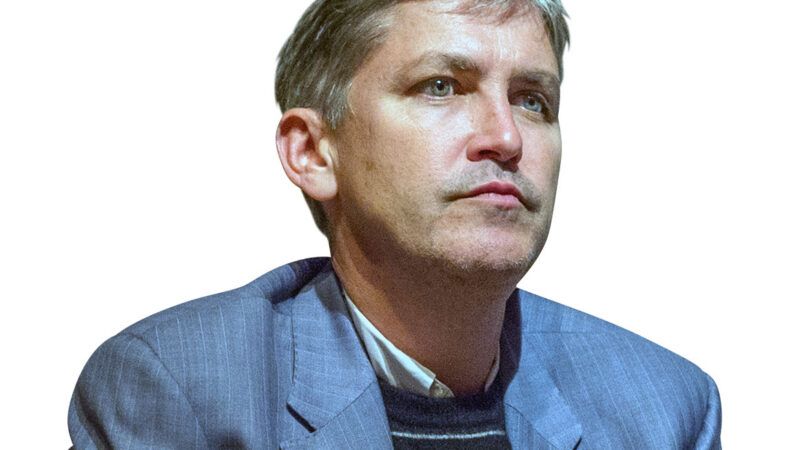Author Steven Johnson on the Good News of the Century
Innovations in epidemiological statistics, artificial fertilizer, toilets, sanitation systems, and vaccines have allowed billions of people to flourish until old age.

"It took us four years just to identify the virus that caused AIDS in the '80s," says author Steven Johnson. "Imagine COVID where it's four years before we even know what is causing the outbreak. That's what would have happened if we just shifted 20 years, 30 years earlier in terms of when this outbreak happened."
Johnson is the author of the new book Extra Life: A Short History of Living Longer (Riverhead Books), which is also running as a series on PBS. He says that the rapid advance in vaccine technology is best understood in the context of a series of innovations that more than doubled the life expectancy of the human race over the last 100 years. Extra Life explores how innovations in epidemiological statistics, artificial fertilizer, toilets, and sanitation systems, along with vaccines and other measures, have allowed billions of people to flourish until old age. Reason's Nick Gillespie spoke with Johnson in June.
Q: What's the elevator pitch for Extra Life?
A: If you rewind the clock to the end of the Spanish flu in 1920, life expectancy globally was probably somewhere around 35. Today, even in the middle of the worst pandemic since then, global life expectancy is just over 72. We have doubled the length of the average human life. If a newspaper came out once a century, that would be the headline.
Q: Is that progress appreciated?
A: Slow, incremental progress is the least interesting thing from a news-cycle perspective. Secondly, it's unlike other forms of progress, like your smartphone or a skyscraper—those tangible objects you can point to and say, "Look, wow, I have a supercomputer in my pocket." Health progress is measured in this bizarre way in nonevents. The progress is "I didn't die of smallpox when I was 2."
Q: Why did industrialization and urbanization initially shorten life expectancy?
A: You have respiratory viruses that are spreading because people are crammed together. You have pollution from all these industrial plants. But mostly you have contaminated water supplies and you have a huge number of young children who start to die. In New York in 1850, 60 percent of all deaths were children.
Q: So the first major milestone in life expectancy is reducing childhood deaths?
A: Forty percent of children died before they reached adulthood for most of human history. We reduced that by a factor of 10, at least.
Q: Your book talks about how agricultural interventions may have saved billions of lives over the last century.
A: Look at what the population of the world was 100 years ago, back when life expectancy was about 35. [There were] just under 2 billion people, and in addition to the Spanish flu and World War I, terrible famines were happening in India and in the early days of the Soviet Union and in Persia. If you had told someone in 1920 that we're going to have four times as many people on the planet in 100 years, they would have said to you, "No, we won't, because we'll never be able to, if we can't feed 2 billion people in the current situation."
Famine as a catastrophic experience that kills hundreds of thousands or millions of people in a society has effectively been eliminated. Local famines will pop up in situations, and you certainly have places in the world where there is chronic malnutrition. But the idea of a mass starvation event—the progress in that, particularly over the last 30 years, is astonishing. It's an amazing story, and it begins with artificial fertilizer.
Q: How much of the increase in life expectancy was about new medicine vs. improving quality of life?
A: I had initially wanted to quantify, if we got an extra 35 years of life, how many did we get from this particular intervention or this particular intervention? It turns out it's very hard to do that math exactly, because it's very unusual to have a single innovation that works on its own. The macro change that made probably the single biggest difference, certainly a massive difference to urban areas around the world, is just cleaning the drinking water.
This interview has been condensed and edited for style and clarity. For a podcast version, subscribe to The Reason Interview With Nick Gillespie.


Show Comments (29)